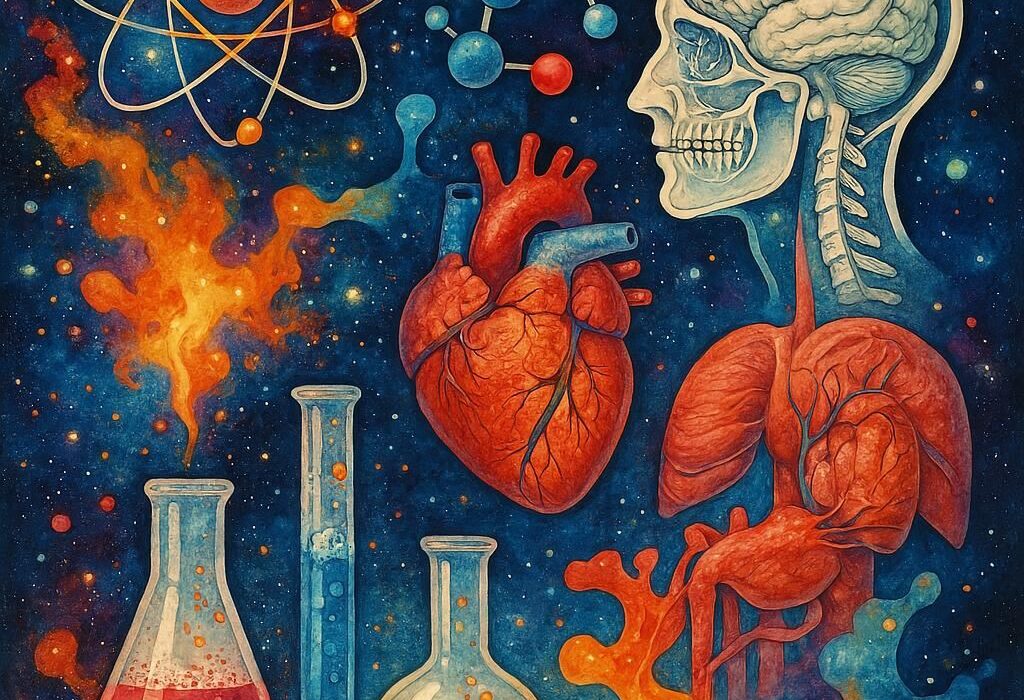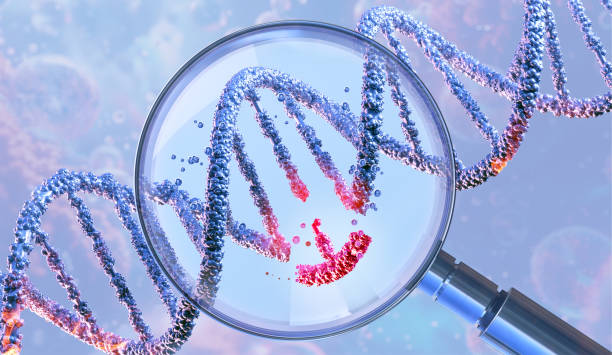Since the dawn of civilization, humans have gazed at the horizon of life with a mixture of awe and yearning. The question “How long can we live?” is both practical and philosophical, touching on biology, medicine, ethics, and the very meaning of existence. Across cultures, from the mythic quests for the Fountain of Youth to the painstaking modern pursuit of longevity, humans have always been captivated by the prospect of extending life beyond natural limits.
Yet longevity is not merely a dream of immortality. It is a reflection of our curiosity about the fundamental processes that govern our bodies, our resilience in the face of decay, and our relentless desire to understand the ticking clock of existence. In the twenty-first century, advances in medicine, genetics, and technology bring us closer than ever to comprehending the ultimate boundaries of human life, even as those boundaries remain shrouded in complexity.
Defining Lifespan and Longevity
To explore the limits of human lifespan, it is essential first to clarify terms. Lifespan refers to the maximum number of years an individual can live under ideal conditions. Longevity, by contrast, emphasizes the quality and duration of life, taking into account health, vitality, and resistance to disease. While average life expectancy has steadily increased over the last century—from roughly 30 to 40 years in the early 1900s to over 70 in many developed countries today—this improvement largely reflects reductions in infant mortality, infectious disease, and accidents, rather than an extension of maximum lifespan.
Supercentenarians, individuals who live beyond 110 years, provide crucial insight into the biological ceiling of life. The oldest verified human, Jeanne Calment of France, lived to 122 years and 164 days, demonstrating that the human body can endure far longer than previously thought. But why, despite advances in healthcare, does this limit appear so persistent? Is it merely a statistical rarity, or does it reveal intrinsic biological constraints?
The Biology of Aging
Aging is a multifaceted process, influenced by genetics, environment, lifestyle, and stochastic events. At the cellular level, aging manifests through damage accumulation, loss of regenerative capacity, and declining metabolic efficiency. One of the central mechanisms is the shortening of telomeres—the protective caps at the ends of chromosomes—which occurs with each cell division. When telomeres become critically short, cells enter senescence or die, contributing to organ decline and systemic aging.
Mitochondria, the cellular powerhouses, also play a pivotal role. Over time, these organelles accumulate damage from reactive oxygen species, reducing energy production and increasing cellular stress. Protein misfolding and impaired autophagy—the body’s process of recycling damaged proteins and organelles—further compromise cellular function. Meanwhile, chronic inflammation, often termed “inflammaging,” gradually erodes tissue integrity and impairs the immune system’s ability to respond to pathogens and malignancy.
Genetics is another crucial factor. Certain gene variants, such as those affecting the insulin/IGF-1 signaling pathway, have been associated with longevity in model organisms and possibly in humans. These genetic factors influence metabolism, stress resistance, and repair mechanisms, providing a partial blueprint for lifespan. However, genes alone do not determine longevity; environmental and lifestyle factors—diet, exercise, exposure to toxins—interact dynamically with genetic predispositions to shape the course of aging.
Evolutionary Constraints on Lifespan
Evolutionary biology offers insights into why human lifespan might have intrinsic limits. From an evolutionary perspective, natural selection favors traits that enhance reproductive success rather than extreme longevity. Once reproduction is complete, evolutionary pressure diminishes, and the body becomes less optimized for survival. This concept, known as the “disposable soma theory,” suggests that aging is not a flaw but a trade-off: energy invested in reproduction and growth is energy diverted from maintenance and repair.
Another evolutionary perspective is the antagonistic pleiotropy theory, which posits that genes beneficial in early life may have detrimental effects later. For example, genes promoting rapid growth or high fertility may accelerate cellular aging, ultimately imposing an upper bound on lifespan. These evolutionary pressures help explain why, despite modern medicine, the human body rarely surpasses the extreme ages seen in supercentenarians.
Insights from Comparative Biology
The study of longevity in other species illuminates both the possibilities and constraints of human lifespan. Bowhead whales, which can live over 200 years, possess remarkable DNA repair mechanisms and low cancer incidence. Certain tortoise species demonstrate negligible senescence, maintaining reproductive and physiological capacity for decades. Even some fish and insects exhibit extraordinary lifespans relative to size and metabolic rate.
These examples reveal that lifespan is malleable under the right evolutionary pressures and physiological adaptations. They also suggest that humans are not bound by an immutable ceiling in principle but by the specific trade-offs encoded in our biology. Humans, with high metabolism, complex brains, and long juvenile periods, may simply be designed for moderate longevity in evolutionary terms, even as medicine and technology challenge these constraints.
Medical Advances and Life Extension
Over the past century, advances in medicine have dramatically increased average life expectancy, but the question remains whether they can extend maximum lifespan. Modern interventions address disease rather than aging itself, preventing premature death from infection, cardiovascular disease, and cancer. Yet these successes do not directly confront the cellular and molecular mechanisms that dictate ultimate lifespan.
Emerging technologies offer new avenues for intervention. Senolytics, drugs that selectively remove senescent cells, have shown promise in extending healthspan in animal models. Telomerase activation, which can lengthen telomeres, holds potential for rejuvenating cellular function. Caloric restriction and fasting-mimicking diets activate stress-response pathways that enhance cellular repair and longevity in multiple species. Gene editing and regenerative medicine, including stem cell therapies, suggest that tissue and organ rejuvenation may one day become feasible.
Nonetheless, these interventions face significant challenges. Aging is not a single disease but a network of interdependent processes, meaning that targeting one pathway may have limited effect. Moreover, long-term safety and ethical considerations complicate the prospect of manipulating human lifespan at a systemic level. Even the most optimistic projections suggest that, while healthspan may increase substantially, surpassing the current maximum lifespan of roughly 120–125 years may remain extraordinarily difficult.
The Role of Lifestyle in Longevity
While genetics and medicine set the biological stage, lifestyle exerts a profound influence on individual lifespan. Diets rich in plant-based nutrients, moderate protein intake, and low caloric excess have been associated with longer life. Regular physical activity maintains cardiovascular health, muscle mass, and metabolic function, reducing the burden of age-related disease. Mental engagement, social connection, and stress management further support healthy aging, influencing immune function and neuroplasticity.
Yet lifestyle alone cannot break the ceiling imposed by biology. Centenarians often share habits conducive to health, but they also possess genetic and epigenetic factors that protect against common diseases. Lifestyle acts as a magnifying glass for these innate advantages, allowing individuals to approach the limits of lifespan without necessarily extending them indefinitely.
Technological Horizons and the Quest for Immortality
In the twenty-first century, the pursuit of human longevity has entered a new technological phase. Artificial intelligence, regenerative medicine, and synthetic biology raise the possibility of radical life extension. Researchers envision repairing or replacing organs, reprogramming cells to a youthful state, or even digitizing human consciousness. While these ideas remain speculative, they underscore a shift in perspective: aging may no longer be an inevitable decline but a process that can be modulated, delayed, or transformed.
Yet profound challenges remain. Aging is not merely an accumulation of damage but a systemic reorganization of biological networks. Even if cellular function can be restored, the brain, immune system, and cardiovascular system may still face irreparable vulnerabilities. Moreover, extending lifespan raises ethical, social, and ecological questions. How would society accommodate vastly longer lives? Would extended longevity exacerbate inequalities or resource scarcity? These questions reveal that the limits of human lifespan are not purely biological but deeply entwined with social and moral realities.
Psychological Dimensions of Extreme Longevity
The quest to extend human life is not only a biological or technological challenge but also a psychological one. Humans are uniquely aware of their mortality, and this awareness shapes culture, behavior, and identity. Living longer may offer more years for creativity, exploration, and connection, yet it may also bring prolonged exposure to loss, physical decline, and existential reflection. Studies of centenarians suggest that resilience, optimism, and a sense of purpose are critical factors in surviving to extreme ages, highlighting that longevity is as much a matter of mind as of body.
The Future of Human Lifespan
Current evidence suggests that the absolute biological limit of human life may lie somewhere between 120 and 125 years, with occasional outliers like Jeanne Calment pushing slightly beyond. Advances in medicine and technology may allow more individuals to reach this limit, while improving the quality of life in later years. Radical extensions beyond this range remain speculative, constrained by the fundamental principles of biology and evolution.
Yet even within these limits, the study of human lifespan is transformative. Understanding aging illuminates the intricate mechanisms that sustain life, informs the prevention and treatment of disease, and deepens our appreciation of mortality and vitality. The pursuit of longevity is as much an exploration of the human spirit as it is a scientific endeavor, reflecting our desire not merely to survive, but to flourish across decades and centuries.
Conclusion: Embracing Life’s Finite Horizon
The ultimate limits of the human lifespan may be fixed by biology, but our experience of life remains boundless. Through science, medicine, and mindful living, humans can approach these limits with vitality, curiosity, and purpose. The quest for longevity challenges us to understand the machinery of life, confront the inevitability of aging, and embrace the preciousness of each moment.
Human lifespan is a horizon, not a cage—a boundary that inspires innovation, reflection, and wonder. While immortality may remain elusive, the journey toward it enriches our understanding of life itself, reminding us that the true measure of existence is not only the years we accumulate but the depth, meaning, and beauty we create within them.
The story of human lifespan is, in essence, the story of human hope: a relentless striving to transcend fragility, to understand our nature, and to live fully in the face of mortality. In contemplating the ultimate limits of life, we discover not despair, but the extraordinary potential and resilience inherent in every human being.






